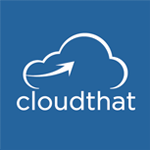- Consulting
- Training
- Partners
- About Us
x
Say you need a Business App to suit the customized requirement of your organization. But you do not have time to get it developed through a customized software development team or you do not have expertise to do hardcore programming. Microsoft Power Apps is a rapid development environment to build customized apps swiftly with no or low-code development experience. It offers user friendly methods to build customized business apps without you having any hardcore programming knowledge. It is a boon to develop quality business applications that can boost your organization’s performance.
This blog post provides readers with an overview of Microsoft Power Platform and its 4 tools. It further explores Power Apps in a detailed way and helps you with a step-by-step guide to build your own Apps.
Microsoft Power Platform is a visionary product from Microsoft to enable workers across industries to create high quality business applications and enhance organization prospects.
The Power Platform comprises 4 members in its family.
But the scope of this blog post is to explore Power Apps and its types in a detailed manner so that even if you are not a hardcore programmer you should attain the skills to develop your own business apps.
Let us talk about making business applications that can run on a mobile, desktop or even a tablet as well. And the best part is, you haven’t been a hardcore programmer to develop them!!!
With Power Apps, which is a low-code/no-code platform, you can create 3 broad types of Apps:
Model Driven Apps are best suitable when you have the following prerequisites met:
With model driven apps, you can use pre-built UI pre-built from Microsoft, and you can create an application within 5 minutes and store user input data in Dataverse.
Technical Know-How Aspects of Model-driven Apps
Key terminologies you will come across while working with model-driven apps are Tables, columns, forms, views, business rules, business process flows, security roles, etc.
Moreover, you do get a bunch of options to customize and configure the out-of-the-box features to add your own custom tables to the existing data model(Dataverse). You even get a handful of security specific settings that enable role-based or task-based application creation.
You can follow the steps mentioned below to get started and make your first model-driven application.
Working on Canvas Apps has the following prerequisites:
Technical Know-How Aspects of Canvas Apps
Some of the key terms that you can come across while making a canvas app – Screens, Input controls, Labels, Gallery control, Media controls, Buttons, Functions, Properties, components and so on.
As a starter pack, you have access to a bunch of templates that can be re-used to quickly build a new canvas application with your own data. It is recommended to explore the templates before starting a new app from blank as it can save a lot of time and effort.
You can follow the steps mentioned below to get started and make your first canvas application.
Congratulations for successfully creating your first Power Apps!!!
The following links can make your app making journey exciting and hassle free…
Here I have compiled important resources that come in handy while building your own Canvas Apps or Model-driven Apps:
You can gain mastery over no or low-code development methods and start building your own Apps for mobile and tablets with the Microsoft Power Apps. The best way to gain competency in Power Apps Studio is by earning The Exam PL 100: Microsoft Power Platform App Maker Associate certification. CloudThat helps you to get trained in this course through industry certified trainers. We being Microsoft Gold Partner are equipped with an industry aligned curriculum to train professionals for Microsoft certification courses.
|
Voiced by Amazon Polly |

CloudThat is a leading provider of cloud training and consulting services, empowering individuals and organizations to leverage the full potential of cloud computing. With a commitment to delivering cutting-edge expertise, CloudThat equips professionals with the skills needed to thrive in the digital era.
Our support doesn't end here. We have monthly newsletters, study guides, practice questions, and more to assist you in upgrading your cloud career. Subscribe to get them all!
Comments